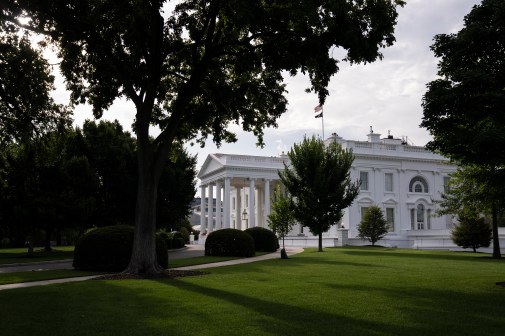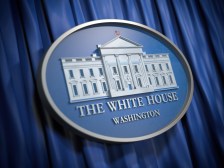During federal IT leadership shakeup, experts say agencies can still make progress

As politically appointed chief information officers clear out their desks, the IT professionals left behind are preparing to navigate a potentially lengthy period of uncertainty — one marked by pressure to deliver results on existing programs while the Trump administration sorts out its budget priorities.
There won’t be a void in federal IT leadership during the new administration’s process of appointing thousands of employees. After Donald Trump’s inauguration, agencies with CIO vacancies will see career government officials step into that gap — and those professionals should be prepared to handle the job for awhile, said David Eagles, director of the Partnership for Public Service’s Center for Presidential Transition. The nonpartisan, nonprofit center worked last year with both Trump’s and Hillary Clinton’s teams.
Management openings, including CIOs, have historically been low priority on the presidential appointment roster, Eagles said. “These are positions that have come in months, if not even sometimes years,” he said.
But he’s optimistic that this transition might be different.
“A couple things have changed in recent years, right? I would say the CIO positions are certainly emerging as much more strategic, and I think the incoming team recognizes that as well, with issues like cyber … the nature of what these agencies are doing has changed,” Eagles said.
The incoming transition team has been “focused a good bit on their budget and they’re looking to very aggressively affect the early budgets, the one that’s to be submitted this year,” and a further out, Eagles said. “And so they’re putting together strategies around the budget. You know they’re also thinking about issues of technology as well.”
And because the transition team has a dedicated cross-agency group focused on issues like technology and innovation, Eagles said he anticipates Trump’s White House having “a very aggressive plan, for both technology and the budget, early, while they get their people in place.”
“It may take a couple of months to get those critical positions in there, but I think they’ll already have a plan, so to speak, that they can begin executing on the first day,” Eagles said.
Eagles couldn’t elaborate much on the team’s specific plans for the first 100 days. But he did say that “the landing teams coming into the agencies have often been tasked with asking questions around technology and gathering information back to this team.”
The tightrope walk of an acting role
Dave Wennergren, the Professional Services Council’s executive vice president of operations and technology, noted the acting CIO probably won’t have a new boss yet — the agency head.
For example, at the Energy Department there is already an acting CIO in place. The agency’s chief information officer left the agency in December, and the job has been filled in the interim by Robbie Green, who had been the department principal deputy CIO for Enterprise Information Resources Management.
“As the acting CIO, while you’re empowered to take action it seems likely that your actions are going to be focusing around continuing to execute the current set of initiatives, not some bold new change that might not stand the light of day once the new bosses come in,” Wennergren told FedScoop.
For those in acting roles, Eagles said, “it is true often folks in that role do not want to get ahead of their eventual person that would take their slot.”
[Listen: Episode 2 of the Gov Actually podcast, “The transition pep talk”]
Seeing that problem, Eagles said the more the incoming team views the CIO position as critical and shortens the window of having an acting CIO in place, the better.
“These positions are strategic positions, they’re long-term positions,” he said. “They need to be thinking about not just the here and now, but 10 years from now.”
During the transition period there is typically an uptick in IT spending around December, Wennergren said.
But then it slows in the first quarter, he said, “because there’s a lack of leadership for awhile. So you got to be careful if you’re in the acting position about not getting in front of your headlights, about how far out on a limb you can go on new initiatives when you’re not sure about the new team’s agenda.”
Acting CIOs would do well to focus on getting results from the agency’s current initiatives, Wennergren said, since the incoming transition team will be looking at what programs it wants to keep, what it wants to rebrand and what it wants to eliminate.
“Be cognizant of the fact that new teams are going to come in with a new agenda, but for now, get things delivered for the programs that you’re working on so that you can demonstrate the things that you’re doing are delivering value for the taxpayer, improving the mission of the organization, so that they won’t be viewed as programs that are going nowhere and should be disbanded,” he said.
Environmental Protection Agency CIO Ann Dunkin said at FedScoop’s 2016 FedTalks she was preparing for the time she would leave. One move Dunkin made was hiring a permanent deputy CIO a few months ago.
“You know I hired him with the transition in mind, you know, someone who can carry the agency forward for potentially two years,” she said.
But what about career CIOs?
Not all federal chief information officers are political appointees, so there will be many who decide to continue their careers under Trump. But they might not have their new bosses for a time, either, as Cabinet-level nominees and other high-ranking appointees wait on the Senate confirmation process, Wennergren said. So a career CIO’s challenge, he said, will be navigating a period of change “where you’re not sure what the direction of the new boss is going to be because you don’t know who your new boss is.”
“And in general, whenever a transition takes place, even if it was between the same party let alone a change in party like this one is, new team comes in with new ideas and wants to get new things done so you have to be ready for that change,” he said.
In particular, career CIOs need to remember that names of programs may change but it’s “the nature of the work” that matters, Wennergren said.
Eagles said: “One of the best things about a well-planned transition is that you find the things that are working really well, and you carry those forward into the next administration. You can call them something different, you can put another coat of paint on them, but ultimately a lot of the quick wins in a new administration will be repackaged existing items from the prior.”






